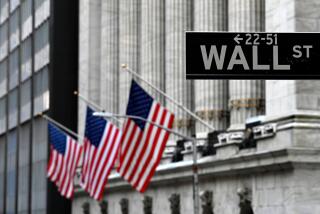Morningstar on Fund Choice : Bigger Isn’t Always Better
Does asset size matter? Yes, but not in the way you might think. We all worry that our small-cap funds are getting weighed down with too much money, making it hard to buy enough good small stocks and thereby threatening their potential returns.
But new Morningstar research indicates that we’re focusing on the wrong thing. We should be watching our growth-oriented funds, not necessarily our small-cap funds.
Our study highlighted two main trends: Value funds carry their weight better than growth funds. Across all investment styles, more assets generally equal more risk. Your oversized growth fund may keep pace with its peers, but it’s probably taking on more risk to do it.
Value funds grow gracefully, thanks to their lower trading costs. When most people think of trading costs (which, by the way, are not included in expense ratios), they think only of brokerage commissions.
*
But a second, indirect component of trading costs is actually more meaningful for funds: the cost of moving the market unfavorably. Even mid-sized funds often can’t buy stocks without pushing the price upward as they’re buying. By the same token, they cannot sell stocks without pushing the price downward as they’re selling.
Both growth and value funds are affected by this phenomenon, but growth funds usually suffer more. Growth managers are like the people who bid on Jackie Onassis’ possessions; because they’re competing with plenty of other buyers for popular merchandise, they often end up paying more.
Value managers, on the other hand, are like the shoppers combing through yard sales every weekend. Because there’s a lot less competition for a battered lawn chair than for Jackie’s string of pearls, prices are not affected by those purchases nearly as much.
The question of why chunky funds tend to be riskier than svelte ones is trickier. It’s the classic chicken-and-egg scenario: Do big funds take on more risk to prop up returns, or do inherently risky funds attract more assets? Either scenario is possible, especially since risk-taking has generally been rewarded during the last 10 years.
*
Had we studied a less-hospitable period, the risk picture could well have been different. It’s interesting to note, however, that when funds reach the $3-billion range, volatility sharply declines. At that point, many funds become more stodgy and market-like. They just can’t buy as many speculative issues and trade as much as they did in slimmer days.
What does all this mean for your portfolio? Well, you might have to do more buying and selling of growth funds--or accept lackluster performance or higher risk as those funds balloon. But it also means less fussing with value funds. And, of course, there are exceptions to every rule. Jack LaPorte’s mid-cap growth funds, T. Rowe Price New America Growth and T. Rowe Price New Horizons, for example, perform strongly despite their heft.
There’s certainly more work to be done on this topic, and we’ll be doing additional research to fill in the details. But broadly speaking, value handles girth better than growth.
Jim Raker, senior research analyst, and Paul R. Pudaite, director of quantitative research, created the methodology for this study.
(BEGIN TEXT OF INFOBOX / INFOGRAPHIC)
More Assets = More Risk
Morningstar split a sample of funds into 10 groups of equal number, ranked by asset size. In most cases, big funds were more volatile, measured by their average standard deviation, than their smaller counterparts, with the exception of the very largest funds.
0
11.0
12.0
13.0
Smallest funds
Largest funds
*Standard deviation is a complex measurement. Simply put, it is the degree to which the fund’s return has varied from its historical mean.
More to Read
Inside the business of entertainment
The Wide Shot brings you news, analysis and insights on everything from streaming wars to production — and what it all means for the future.
You may occasionally receive promotional content from the Los Angeles Times.









